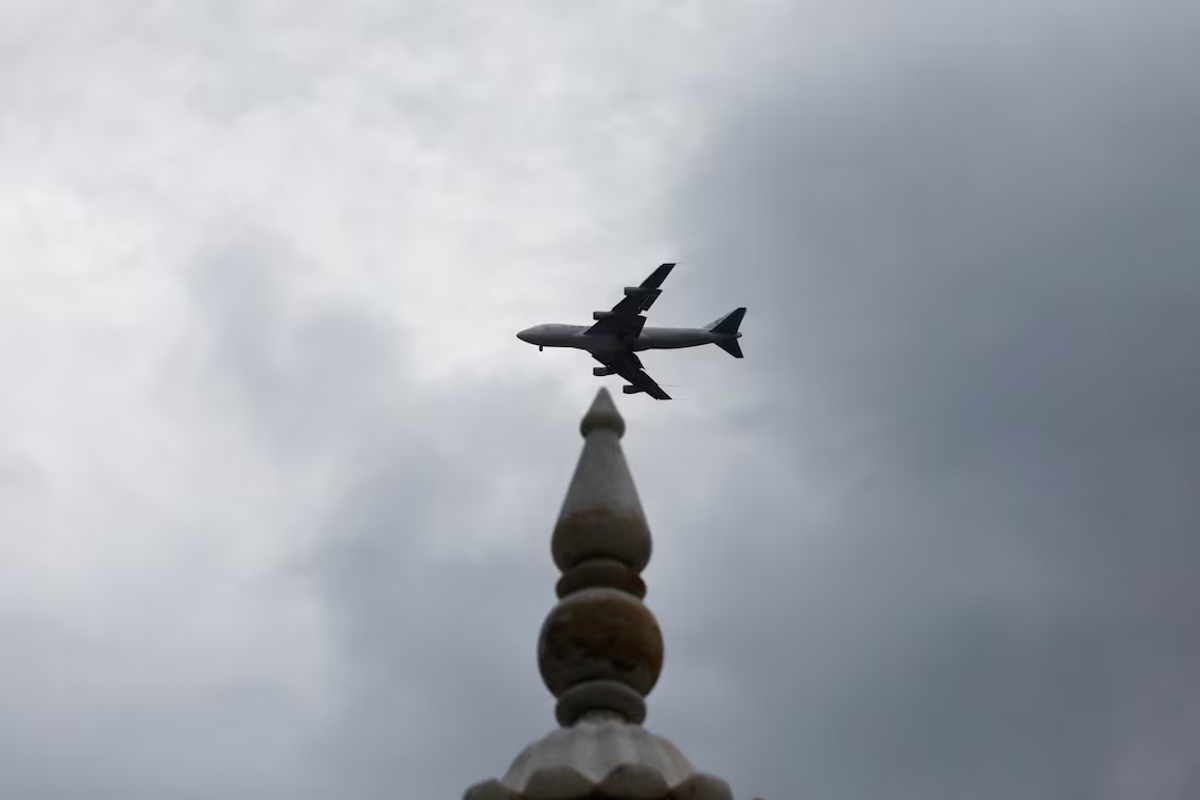Airspace ban on Indian planes cost Pakistan PKR 4.1B in two months
The Indian flight ban led to 100-150 aircraft being blocked daily, causing a 20% drop in transit traffic, says Defense Minister Khawaja Asif

Javed Hussain
Correspondent
I have almost 20 years of experience in print, radio, and TV media. I started my career with "Daily Jang" after which I got the opportunity to work in FM 103, Radio Pakistan, News One, Ab Tak News, Dawn News TV, Dunya News, 92 News and regional channels Rohi TV, Apna Channel and Sach TV where I worked and gained experience in different areas of all three mediums. My journey from reporting to news anchor in these organisations was excellent. Now, I am working as a correspondent with Nukta in Islamabad, where I get the opportunity of in-depth journalism and storytelling while I am now covering parliamentary affairs, politics, and technology.

A plane flies past a monument with rain clouds in the background, during the monsoon season in Karachi.
Pakistan incurred an estimated PKR 4.1 billion shortfall in overflying revenue due to the closure of its airspace to Indian-registered aircraft between April 24 and June 30, 2025, Defense Minister Khawaja Muhammad Asif told the National Assembly in a written reply on Friday.
The move followed India’s unilateral suspension of the Indus Waters Treaty on April 23, prompting Pakistan to revoke overflight permissions for aircraft operated, owned, or leased by Indian airlines.
The ban remained effective from April 24 onward, with a complete closure between May 6 and May 12 during Pakistan’s military operation Marka-e-Haq. While India closed its airspace entirely to Pakistani flights during this time, Pakistan maintained limited restrictions.
The closure disrupted 100 to 150 Indian aircraft daily, reducing transit traffic by about 20 percent and affecting revenue, Asif stated.
Responding to a parliamentary question, Asif said Pakistan Airports Authority (PAA) saw a revenue shortfall of PKR 4.1 billion during the period, contrary to the PKR 8.5 billion figure mentioned in the question.
He compared the situation to the 2019 airspace closure, when the PAA experienced a revenue shortfall of PKR 7.6 billion — approximately USD 54 million — versus the USD 100 million cited in the inquiry.
Average daily overflying revenue in 2019 was USD 508,000, lower than the USD 760,000 estimate presented in the question, the minister clarified.
Asif emphasized that while financial losses were incurred, national sovereignty and defense remained paramount. “Despite the economic cost, the protection of our homeland remains our foremost priority,” he said.
The minister clarified that decisions related to airspace closures, particularly during wartime, fall under the jurisdiction of the federal government. Notices to airmen (NOTAMs) are issued by the Pakistan Airports Authority accordingly.
“These decisions have strategic and diplomatic underpinnings to safeguard civilian lives, protect national infrastructure, and provide room for military plans and operations,” he said.
Currently, Pakistan’s airspace remains open to all airlines and aircraft, except for those linked to Indian operators. Similarly, Pakistan’s aircraft remain banned from Indian airspace.
Despite the temporary setback, Asif said the PAA displayed fiscal resilience. “The amounts mentioned above are revenue shortfalls, not financial losses,” he clarified.
“No revision in overflight or aeronautical charges was made during the affected period. This reflects the robustness of PAA's revenue model and its ability to absorb short-term shocks without requiring upward tariff revisions or government bailout,” he added.










Comments
See what people are discussing